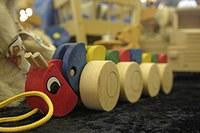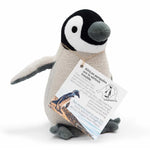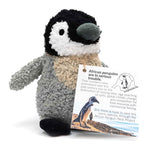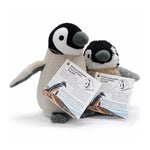

Image courtesy of flickr user Fabian Bromann
Playtime should be carefree, yet gaping holes in laws to protect children from chemicals allow toxics in the toy box. Choose safer toys for kids of all ages with the following tips:
- Keep PVC and polycarbonate plastic out of the toy box. PVC (vinyl) is the soft, flexible plastic commonly found in bath toys, dolls, inflatables, and squeezy toys. Toys labeled “phthalate-free PVC” may still contain harmful or untested chemicals. BPA-containing polycarbonate is a clear hard plastic also found in toys. Look for toys labeled “BPA-free,” choose safer plastics, or go with natural materials.
- Avoid polyurethane foam stuffed toys. Instead look for toys filled with polyester, down, wool or cotton. These materials are less likely to contain flame retardants or offgas.
- Pick plastic-free toys when possible made from materials such as solid wood, cloth, paper, or wool. Ideas for plastic-free playthings include games and puzzles from cardboard or wood, fabric dolls, paper dolls, wooden rattles and wool figurines. Nature and natural materials can be the best educational toys. Consider the yellow represented in plastic toys, in contrast to the range of yellows in autumn leaves. Let nature be your toy box!
- Evaluate toys in your household for chemicals of concern with theHealthyStuff.org toys database. Thousands of toys have been tested since 2007 for toxics including lead, chlorine and cadmium. Nominate new toys to be tested, or create a shopping list of safer products using the website.
- Play dress up safely. Avoid play cosmetics and face paints which can contain toxics. Focus the fun on costumes instead of cosmetics, or try making face paint with safer ingredients like cornstarch in these recipes. Steer clear of children's costume jewelrywhich can contain high levels of heavy metals and are easily mouthed or swallowed.
- Avoid projects that involve heating plastic and may release toxic fumes.Examples include polymer sculpting clays and plastic fusebeads.
- If it’s not a toy meant for young kids, think twice before letting kids play with it. Electronics such as remote controls and cell phones were not intended for kids, and are not accountable to safety standards in place for toys. Don’t hand over household keys to little ones because they often contain lead. Small high-power magnet sets, tempting for kids, are extremely dangerous if swallowed.
- Be selective with hand-me-downs, especially with toys kids could put in their mouths. Often it’s impossible to know the manufacturer or date of a used toy, making it challenging to evaluate for safety. General guidelines include avoiding plastics (especially PVC and BPA-containing polycarbonate) and chipped coatings. With vintage toys manufactured prior to 1978, there may be additional concern with lead and cadmium in paint or plastic. Unfortunately, homeowner lead testing kits are unreliablefor toy testing.
- Stay informed on the latest toy recalls by subscribing to the U.S. Consumer Product Safety Commission’s email updates.
- Shop at local, independent toy stores that share a commitment to healthier products. Let local retailers and your favorite manufacturers know about the importance of toys that are safe for kids of all ages!
Article from Washington Toxics Coalition



